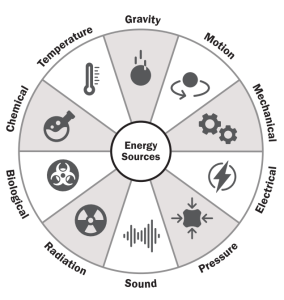34 Work Area Hazards
Learning Objectives
- Appraise a situation or work area of potential hazards
- Apply safety knowledge to mitigate identified hazards
Key Questions
- What are typical work area hazards?
- How can these be mitigated?
Introduction
Hazards are anything that has the potential to cause an injury or illness. All workplace workers have to responsibility to identify, and report work area hazards in order to reduce and/or eliminate all potential hazards.
Every trade has its own hazards. Logging requires leg protection, and the construction industry often uses fall protection. As well, many jobs use controlled products (refer to the material safety data sheet for PPE information). Whatever the job, know what PPE you need. You will be required to perform a variety of tasks, which will all have different requirements for PPE. Always ensure yours and others’ safety before starting a task.
Every workplace should have a system in place to identify, assess and control the hazards.
What is a safety hazard?
Safety hazards include any force that is strong enough to cause injury in an accident. Safety hazards occur most often when adequate workplace safety standards are not met.
What is an occupational health hazard?
An occupational health hazard is any material or condition that can cause occupational injuries and/or illness. Health hazards can cause immediate and serious effects, or slow and gradual injury. Some occupational health hazards include:
- Chemicals (acid, solvents, paint)
- Ciological hazards (bacteria, viruses, dust, moulds)
- Physical agents (electric currents, heat, light, noise, radiation)
- Ergonomic hazards (poor work station designs)
- Other stress agents (violence, abuse, harassment)
What is the best way to control hazards in the workplace?
There are three main steps that can be taken in order to control hazards.
- Eliminate the hazards posed by equipment and work processes (i.e. redesign work stations, switch chemicals used in work, etc.).
- If eliminating the hazard is not possible, control the hazard to reduce the risk to workers (i.e. install machine guards or better ventilation systems, etc.)
- If controlling the hazards is not effective, protect the workers from risk with use of tools and protective equipment, and proper safety training.
How do I identify workplace hazards?
Employers should always ensure that work environments are as safe as possible. Part of assessing risk is setting up a proper job site analysis. Safety analysis should include the following steps:
- Select the job to be analyzed by reviewing injury data. Select the most common injuries and severe injuries to be analyzed first.
- Separate the job into its separate tasks or stages
- Identify the potential health and safety hazards at each stage
- Choose and implement safety standards
- Review the workplace safety analysis document regularly
- Update changes and improvements as necessary
- Effectively communicate safety standards and training throughout company
What questions should I ask when performing a workplace hazard assessment?
To help uncover potential workplace hazards, ask questions such as:
- Can any body part be caught between objects?
- Do any tools or machines present any hazards?
- Can the worker make harmful contact with any machine parts?
- Can the worker slip, trip, or fall?
- Can the worker suffer from strains from lifting, pushing or pulling?
- Is the worker exposed to extreme temperatures?
- Is the worker exposed to extreme noise or vibration?
- Is there a danger from falling objects?
- Is proper lighting a concern?
- Can weather conditions affect safety?
- Is the worker exposed to harmful levels of radiation?
- Is the worker exposed to chemical or biological hazards?
- Is the worker exposed to dust, paint fumes, mists or vapours?
- What unexpected hazards could arise?
- What external forces could impact safety?
Slips and Falls
Slips and falls can result from:
- slippery and cluttered floors and stairs
- loose or bumpy carpets and floor mats
- defective ladders and footstools
- poor visibility, and
- wet and greasy areas.
To prevent slips and falls:
- MAKE sure that wooden duckboards and railings are in good repair and free of splinters.
- CHECK that ladders and footstools are in good repair and have non-skid feet.
- TAKE defective ladders or footstools out of use until they are repaired or replaced.
- REPLACE burnt-out light bulbs and fluorescent tubes as soon as possible.
- ENSURE that outside areas used to receive deliveries or take out garbage are well lit and free of obstructions.
- USE ladders, for climbing, rather than unsafe substitutes such as chairs, stools or boxes.
- CLOSE oven, dishwasher and cupboard doors when you’re not using them – open doors may trip you or your co-workers.
To prevent floor hazards:
- REPORT any tripping or slipping hazard to your supervisor right away.
- KEEP floors and stairs clean, dry and non-slippery. CLEAR debris and obstructions from floors and stairs.
- USE slip-resistant waxes to polish and treat floors. WEAR proper shoes with slip-resistant soles.
- MAKE sure that carpeting, rugs and mats are free of holes, loose threads, loose edges and bumps that may cause tripping.
- USE warning signs for wet floors and other hazards.
Respiratory Protection
There is a wide range of respiratory protection – from dust masks, cartridge respirators, to self-contained breathing apparatus and work packs. This equipment should never be used without proper training and work procedures. Misuse can be deadly.
To prevent exposure to hazardous products:
- ASK your supervisor about possible harmful effects of the products you use.
- MAKE sure you receive WHMIS training in the safe use, handling, storage and disposal of products. WHMIS stands for Workplace Hazardous Materials Information System.
- READ the label on the container.
- FOLLOW the manufacturer’s instructions for use.
- USE only products that are stored in clearly labelled containers.
- WORK in a well-ventilated area. USE proper PPE.
- KNOW where to find the material safety data sheets/ safety data sheets (MSDSs/SDSs) for the products you use – These sheets give you important information about hazards, safe use and first aid.
- GET proper first aid and medical help if you breathe in, swallow or come into contact with a toxic product.
To store hazardous products safely:
- KEEP them in suitable containers and label clearly – not in food containers.
- LOCK up hazardous product containers in a designated storage area marked with warning signs.
- PLACE hazardous products on lower shelves, below eye level, rather than on top shelves.
- STORE protective equipment separately from hazardous products.
To handle hazardous products safely:
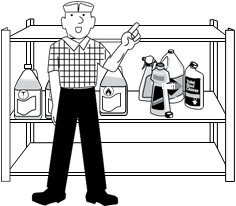
- WEAR the personal protective equipment required by your employer.
- USE separate spoons, scoops or cups rather than cooking utensils, food containers or your hands to dispense hazardous products.
- USE a utensil made from a material that won’t react with the hazardous product to dispense liquids and powders instead of using plastic spoons.
- CLOSE hazardous product containers after use.
Electrical Safety
Hazards
Common electrical hazards are electric shock and electrocution. These can occur from contact with:
- faulty electrical tools and equipment,
- faulty appliances and wires,
- electrical outlets,
- switch panels, and
- electric transformers.
Prevention
- INSPECT equipment, power cords, and electrical fittings for damage prior to each use. Repair or replace damaged equipment.
- SWITCH equipment OFF before connecting them to a power supply and before making adjustments.
- ENSURE that electrical equipment is properly grounded or double-insulated. The grounded equipment must have an approved 3-wire cord with a 3-prong plug. This plug should be plugged in a properly grounded 3-pole outlet.
- TEST all electrical equipment for effective grounding with a continuity tester or a ground fault circuit interrupter (GFCI) before use.
- KEEP power cords clear of the equipment during use.
- SUSPEND power cords over aisles or work areas to eliminate stumbling or tripping hazards.
- COVER open electrical outlets with plastic safety plugs CHECK power cords and plugs daily. Discard if worn or damaged. Any cord that feels more than comfortably warm should be removed from use, replaced, or checked by an electrician.
- ELIMINATE octopus connections.
- PULL THE PLUG, NOT THE CORD.
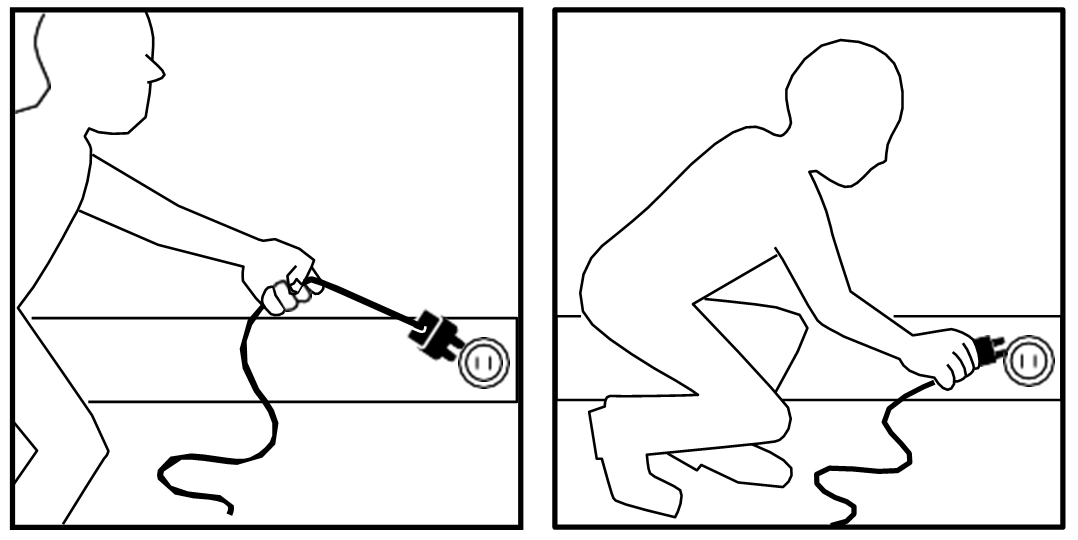
Do not unplug by pulling cord. Always grip the whole plug. - USE extension cords with appropriate power wattage ratings only to temporarily supply power to an area that does not have a power outlet.
- INSTALL permanent wiring if extension cords are constantly in use.
- KEEP power cords away from heat, water and oil. They can damage the insulation and cause a shock.
- DO NOT bypass the on/off switch and operate the tools by connecting and disconnecting the power cord.
- DO NOT USE electric tools in wet conditions or damp locations.
- DO NOT CLEAN electric equipment and tools with flammable or toxic solvents.
- DO NOT CARRY electrical tools by the power cord.
- DO NOT TIE power cords in knots. Knots can cause short circuits and shocks. Loop the cords or use a twist lock plug.
- DO NOT PLUG several power cords into one outlet.
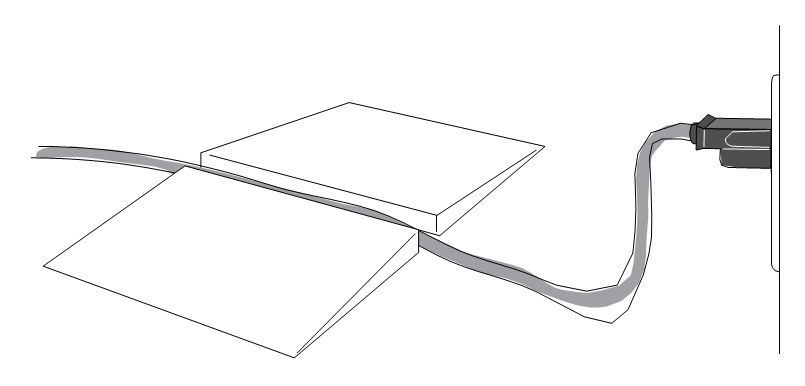
- DO NOT DISCONNECT power supply by pulling or jerking cord from the outlet. Pulling the cord causes wear and may cause a shock.
- DO NOT USE extension cords as permanent wiring.
- DO NOT ALLOW carts and trolleys to pass over unprotected power cords. Cords should be put in conduit or protected by placing planks alongside them.
Fires can be caused by:
- ignition of hot oils and greases
- cardboard and paper materials in contact with hot stoves and ovens
- faulty electrical equipment and cords
- wet electrical equipment and appliances
- faulty switches and power outlets
Portable Fire Extinguishers
Portable fire extinguishers are used to put out small fires. The type of extinguisher to be used depends on the type of fire. You should be trained to use the fire extinguishers used in your workplace. You should also know how to manually operate the built-in CO2 system in range hoods/ ducts.
- ASK your supervisor about fire safety procedures in your workplace.
- KNOW types of fire extinguishers and how to use them. Kitchens may need to have several types of extinguishers, including Class K for fires involving oils and fats.
- IN CASE of fire, you must follow fire safety procedures established by your employer, and approved by the local fire department.
- KNOW fire extinguisher and alarm locations.
- KEEP exits and passageways clear at all times.
- DO NOT ACCUMULATE combustible materials such as cardboard boxes and paper bags in the cooking area in hallways or near exits.
- DO NOT USE electrical wires and equipment which are wet.
- DO NOT USE faulty electrical equipment and cords. DO NOT BRING open flame near hot oils and grease.
A helpful hint: A small fire on a stove or broiler from spilt grease accumulation can be put out with salt, baking soda, or a carbon dioxide fire extinguisher.
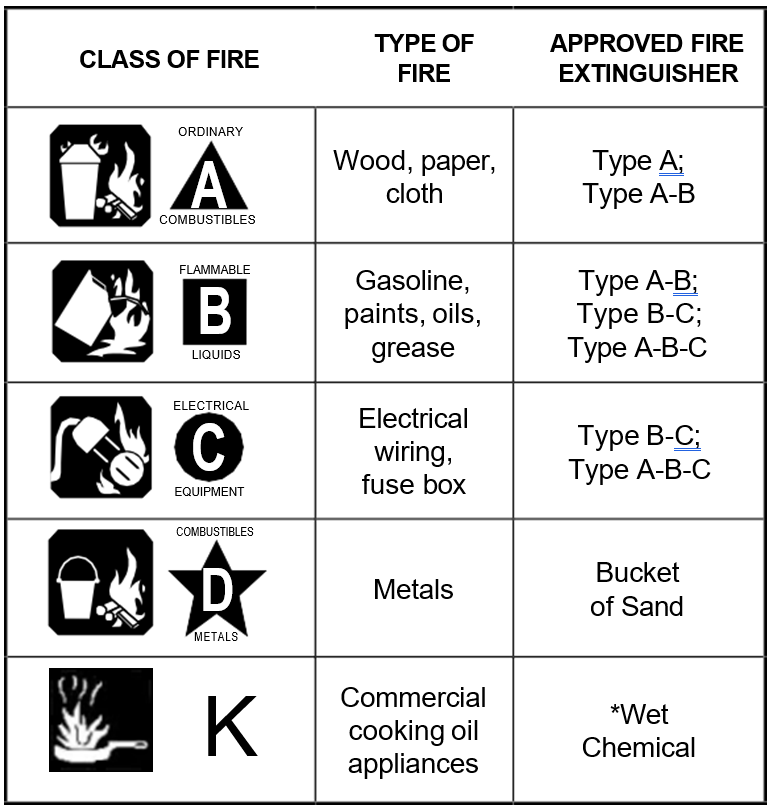
*Class K extinguishers may require specific training, including when they should be used or not used. For example, the extinguishing agents in many Class K extinguishers are electrically conductive and should only be used after electrical power to the kitchen appliance has been shut off.
If a fire occurs:
- SOUND the alarm.
- FOLLOW the posted safety procedures that were put in place by your employer and approved by the local fire department, and
- STOP, drop to the ground and roll to smother the flames, if you catch on fire.
Hazardous Energy Wheel
WorkSafe Saskatchewan has created a Hazardous Energy Wheel. The hazardous energy wheel is a visual representation of energy found in the workplace that, if released, has the risk of causing an injury. This tool is meant to support hazard recognition and control activities.
Confined Spaces
As a SIGA worker, you may be required to work in a confined space. There are safety protocols and guidelines put in place by SIGA to ensure workers’ safety. The safety protocol is as follows:
Identification of Confined Spaces, Hazards, etc. (4 Oct 96 cO-1.1 Reg 1 s267)
Where a worker may be required or permitted to work in a confined space, an employer, in consultation with the committee, shall identify types of confined spaces at the place of employment that a worker may be required or permitted to enter; types of hazards that are or may be present at each confined space; alternative means to perform the work to be performed in a confined space; that will not require the worker to enter the confined space; and alterations to the physical characteristics of the confined spaces that may be necessary to ensure safe entrance to and exit from all accessible parts of each confined space.
Avoidance of Entry into Hazardous Confined Space (4 Oct 96 cO-1.1 Reg 1 s268)
Where reasonably practicable, an employer shall use an alternative means to perform work that will not require a worker to enter a hazardous confined space. An employer shall take all reasonably practicable steps to prevent any unauthorized entry into the confined space.
Requirements before Confined Space is Entered (4 Oct 96 cO-1.1 Reg 1 s269)
Where a worker will be required or permitted to work in a confined space, an employer, contractor or owner shall, before requiring or permitting the worker to enter the confined space ensure that there is a safe entrance to and exit from all accessible parts of the confined space; and make all practicable alterations to the physical characteristics of the confined space necessary to ensure a safe entrance to and exit from all accessible parts of the confined space.
In making alterations pursuant to the above clause, an employer shall ensure that the structural integrity of the confined space is maintained.
Requirements before Hazardous Confined Space is Entered (4 Oct 96 cO-1.1 Reg 1 s270)
Before a worker is required or permitted to enter a confined space, an employer shall appoint a competent person to assess the hazards. Where a hazardous atmosphere has been identified, to test the atmosphere of the confined space for oxygen enrichment or deficiency; the presence of flammable or explosive substances; and the presence and hazardous concentration of airborne chemical substances; and to determine whether work activities or processes will result in the release of toxic,
flammable or explosive concentrations of any substances during the worker’s occupation of the confined space.
Measures have been taken to ensure that a worker will not drown or become entrapped in any liquid or free-flowing solid present in the confined space; the entry of any liquid, free-flowing solid or hazardous substance into the confined space in a quantity that could endanger the health or safety of the worker has been prevented; all energy sources that present a hazard to a worker entering into, exiting from or occupying the confined space have been locked out, with the energy sources being put in a zero energy state; any hazards from biological substances are present in the confined space; and the opening for entry into and exit from the confined space is sufficient to allow safe passage of a worker who is using personal protective equipment required by these regulations.
When testing the atmosphere of a confined space, a competent person shall use appropriate and properly calibrated instruments that have been tested to ensure that the instruments are capable of operating safely and effectively.
A competent person who carries out the activities above shall prepare a report in writing that sets out the results of the assessment, tests and determinations; recommended special precautions and procedures to reduce the risk to a worker that are to be followed by a worker entering into, exiting from or occupying the confined space; and recommended personal protective equipment to be used by a worker entering the confined space.
SIGA Commitment to Confined Space Entry
SIGA’s commitment is to never have an employee enter into a Confined Space without having Confined Space Entry training at an outside Training Facility. Each employee that takes the Confined Space Entry training must also take Fall Protection training. SIGA’s commitment to their Safety Management Program means they put their employees first.
Hazard Reporting
The health and safety legislation requires employees to report hazards to their supervisor. The immediate hazard reporting process allows employees to report hazardous conditions or practices as they notice them. This allows for prompt corrective action without waiting for the next round of regular inspections.
Hazards can be reported verbally or by filling a simple form. The following is an example of such a form.
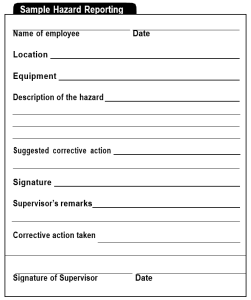
SIGA Hazard Reporting Procedures
Department Managers/Supervisors and MOD are required to advise their employees of all hazards in the workplace that they are aware of. If hazards are reported and corrected immediately, unnecessary accidents, injuries or near misses may be prevented.
1. All employees must inspect their work area daily and report any unsafe conditions to their Department Manager/Supervisor or MOD prior to the commencement of their shift.
2. Unsafe conditions may include:

- Fire and explosion hazards;
- Substandard housekeeping;
- Cluttered work areas;
- Faulty equipment or inadequate guards;
- Blocked emergency exits;
- Slip and trip hazards;
- Defective or broken office furnishings and equipment.
- Unsafe work practices
Employees are required to immediately report any hazards on the Health & Safety Incident Reporting Form and the Health & Safety Incident Investigation Report form and distribute as follows:
Central Office Employees:
1. Department Manager;
2. Occupational Health & Safety Committee (Copy); and
3. Employee Relations (Copy)
Casino Employees:
1. Manager on Duty (MOD);
2. Security;
3. Human Resources (copy); and
4. Health and Safety Committee (copy).
*If the hazard can be immediately resolved by the MOD, Department Manager or Supervisor, the Health & Safety Incident Investigation Report Form does not need to be completed.*
Note: Should the same incident happen more than one time by the same employee, the incident must be reported.
3. The MOD or Department Manager (CO Employees) / Security must complete their portion of the Health & Safety Incident Reporting Form and the Health & Safety Incident Investigation Report Form as soon as possible and ensure that the Health and Safety Committee receives a copy of the report within 24 hours. The MOD must ensure their respective Department Manager is advised of any serious occurrences within 24 hours.
4. The MOD or Department Manager (CO Employees) / Security must take the appropriate steps to remedy any hazard within their control, and/or inform the required level of management if the hazard is beyond their control, to rectify the hazard.
5. It is the MOD or Department Manager (CO Employees)/ Securities responsibility to follow up to ensure that hazards have been appropriately remedied or corrected and that all reporting forms have been filled out and signed off on and distributed to the appropriate departments.
Remember, by promptly reporting hazards we can prevent incidents and unnecessary accidents.
Copyright © 2013 WorkSafe Saskatchewan. All rights reserved. Used with permission, from Slips, trips and falls | WorkSafe Saskatchewan

